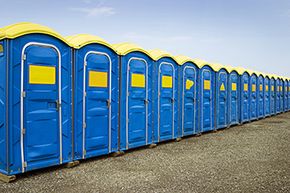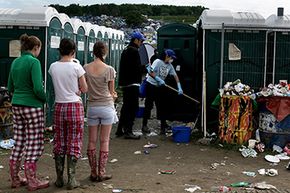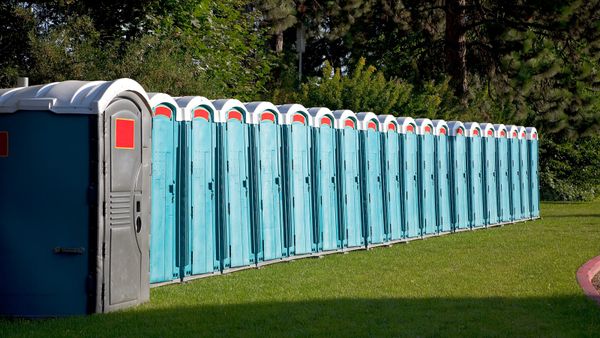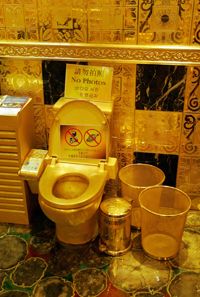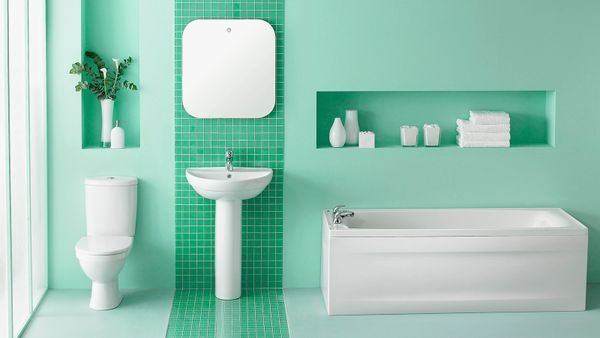At the weeklong Taste of Chicago festival held every July, more than a million people swarm Chicago's lakeside Grant Park to consume large quantities of digestibly combustible food like slow-roasted Cuban pork tamales, bacon on a stick, Italian sausage sandwiches, sautéed goat with plantains and braised oxtail poutine.
If you're curious, there are only a handful of bathrooms in Grant Park in the vicinity of the festival [source: Chicago Park District]. Time to call in the poop pros.
Advertisement
In 2014, the veterans at Service Sanitation Inc. won the contract to provide porta-potties — "portable sanitation equipment" in industry lingo — for the Taste of Chicago. After consulting with event organizers, the crew trucked in 380 regular porta-potties, 28 wheelchair accessible units, and 80 hand-washing stations with soap and fresh running water [source: Dageforde].
Every night from 9 p.m. to 3 a.m., Service Sanitation arrived with tanker trucks and vacuum pumps to suck up the day's waste and refuel the porta-potties with fresh toilet paper and pungent blue chemicals [source: Dageforde]. By morning, the units were primed and ready for another big day of eating and evacuating!
Portable bathrooms go by many names: porta-potty, porta-john, jiffy-john, porta-loo (UK) and toi-toi (Malaysia). And portable sanitation companies certainly have a way with puns; "No one takes care of business like Mr. John!" or the classic, "We're No.1 in the No. 2 business!"
While you're most likely to find portable bathrooms at large outdoor events like food festivals, county fairs and rock concerts, they're also required by law at most construction sites and a matter of urgent necessity just about anywhere there isn't a dedicated restroom: parks, hiking trails, roadside food stands and ball fields.
Porta-potties aren't pretty, but they are simple, well-built structures that fulfill a critical societal function. And as repulsive as it seems to fill a stationary tank with human waste and suck it up with a vacuum once a week, portable toilets save a lot of water — an estimated 45 billion gallons (170 billion liters) a year [source: PSAI] — and beat the heck out of squatting in a field.

